Exploring freshwater habitats reveals an array of unique fish species, each with distinct characteristics and appeal. These fascinating creatures not only captivate aquarium enthusiasts but also highlight the diversity of aquatic life. From striking appearances to intriguing behaviors, these freshwater fish species stand out for their uniqueness.
Flowerhorn Cichlid
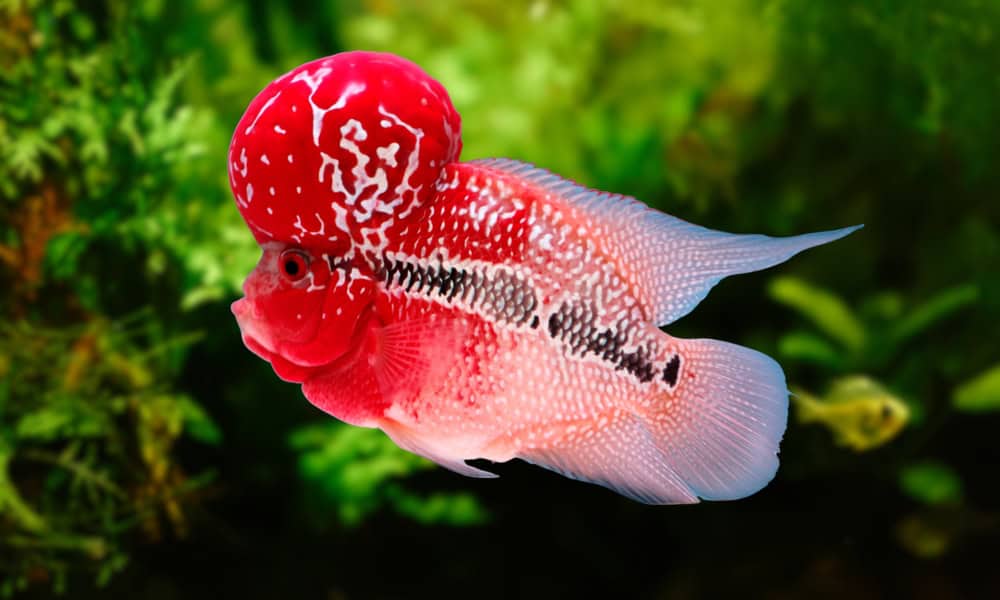
The Flowerhorn Cichlid is renowned for its vibrant colors and distinctive hump on its head. Originating from Southeast Asia, this hybrid fish thrives in warm, well-oxygenated waters. Its appearance is marked by bright reds, blues, and greens, making it a favorite among aquarium hobbyists. Flowerhorns are adventurous and curious, often interacting with their surroundings and carers. Selective breeding created the Flowerhorn’s remarkable appearance and engaging attitude.
Blue Sucker
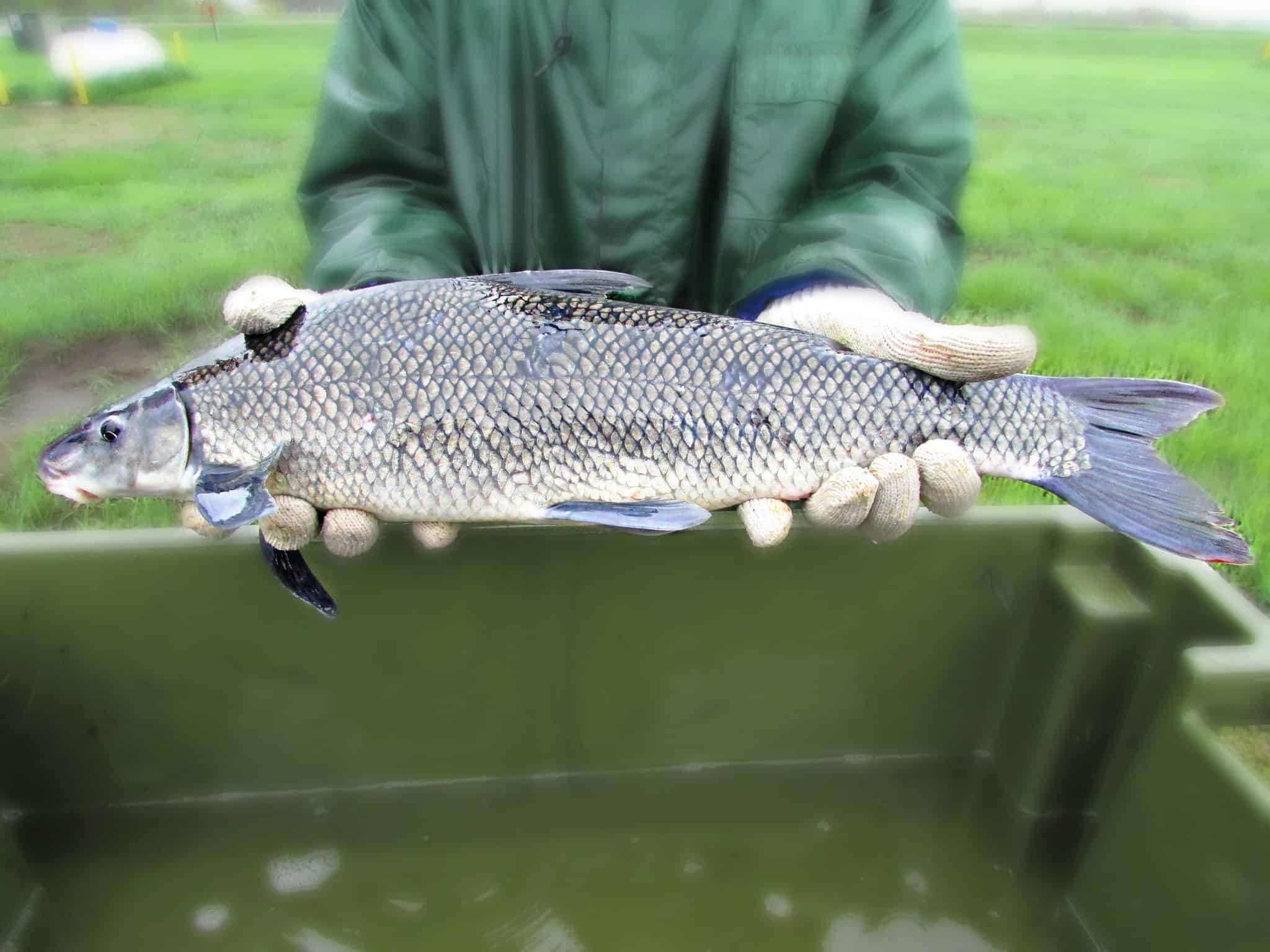
The Blue Sucker, native to North American rivers, is known for its elongated body and dark blue coloring. This species prefers fast-flowing waters with rocky substrates. Blue Suckers are elusive and difficult to spot, often hiding among rocks and debris. Their streamlined bodies and pointed snouts allow them to navigate swift currents efficiently. Researchers and fishermen admire Blue Suckers for their rare environmental requirements and scarcity.
Zebra Plecos
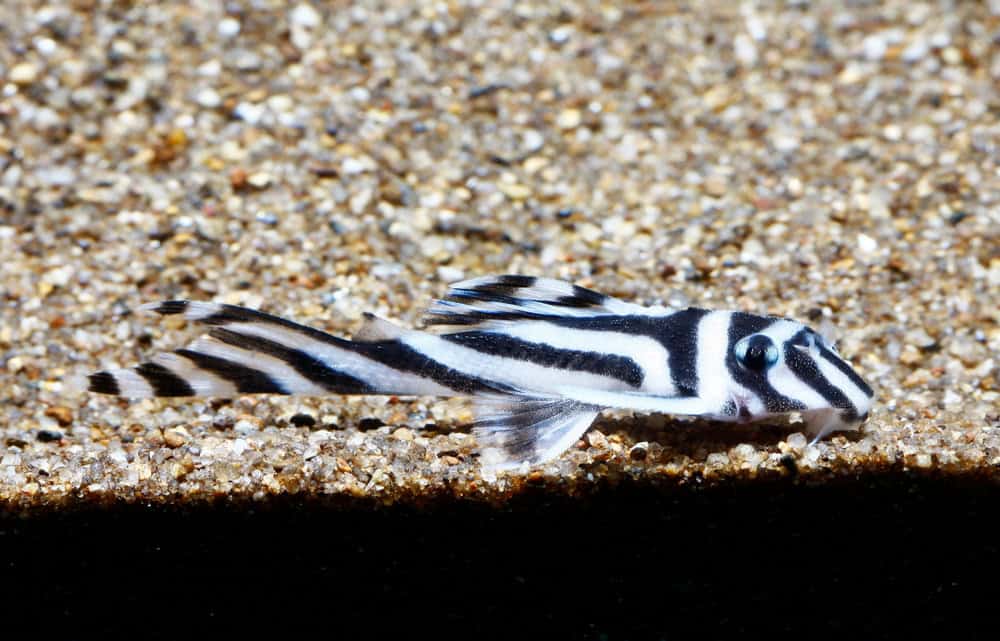
Zebra Plecos hail from the clear, fast-flowing waters of the Xingu River in Brazil. This striking fish is easily recognized by its black and white striped pattern, resembling a zebra. The average length of a zebra pleco is only 3-4 inches. They have a calm temperament and are often seen grazing on algae and detritus. The Zebra Pleco, indigenous to a river system endangered by dam building and habitat damage, is gorgeous and rare.
Royal Farlowella Catfish
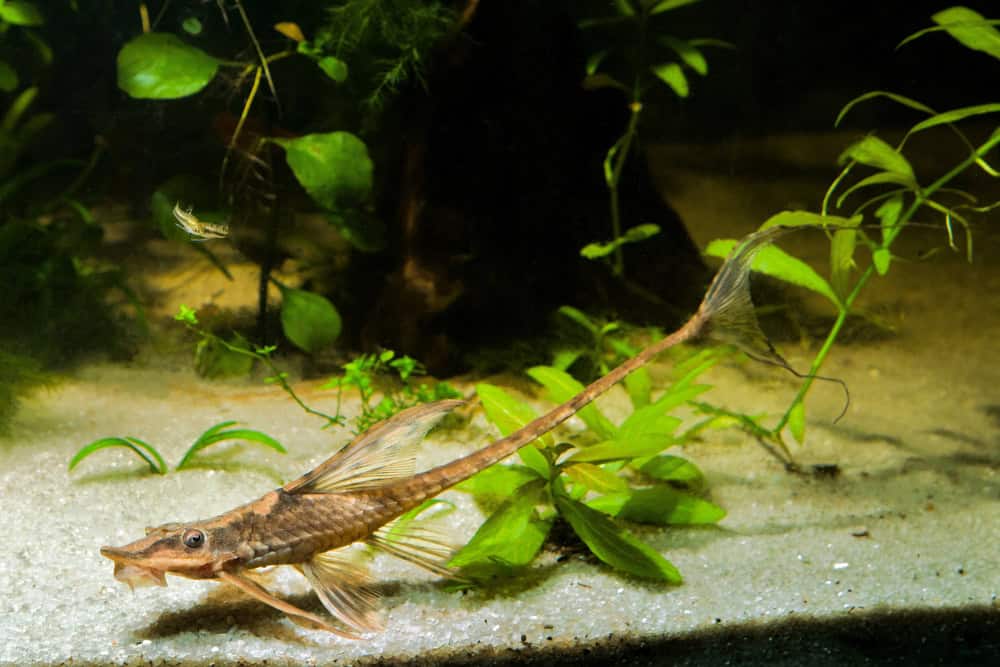
The thin, elongated Royal Farlowella Catfish is native to South American rivers, mainly Colombia and Venezuela. Its long, stick-like body and brown and tan color let it blend with submerged branches and roots. Known for its peaceful demeanor, the Royal Farlowella Catfish spends much of its time attached to surfaces, grazing on biofilm and algae. This fish is unique due to its remarkable camouflage and specialized feeding habits, making it a fascinating addition to any aquarium.
Betta
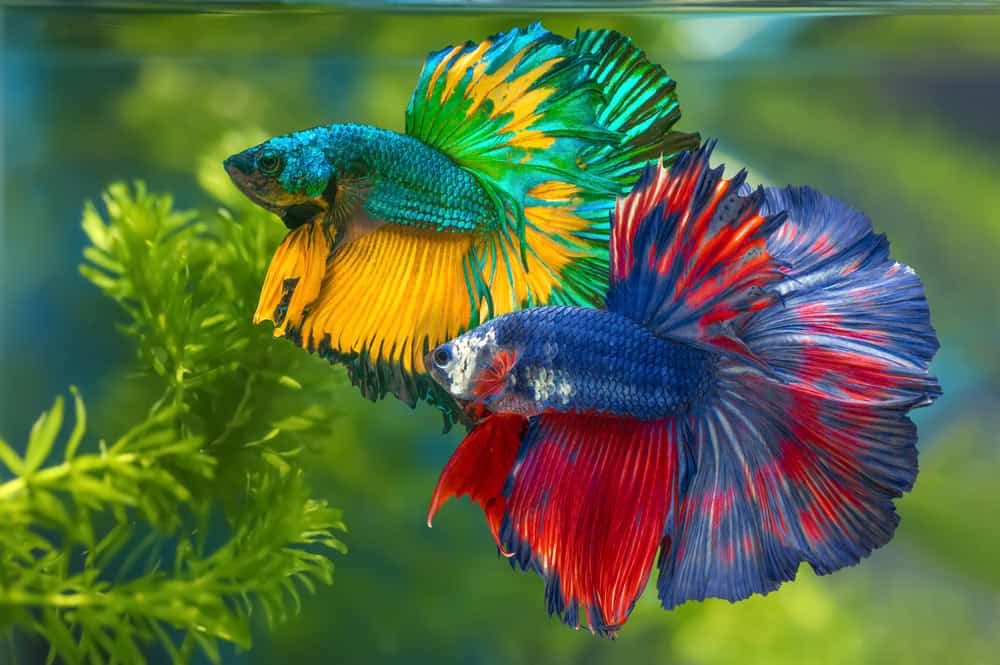
Betta fish, also known as Siamese fighting fish, originate from the shallow waters of Thailand, Cambodia, and Vietnam. Their vibrant colors and long, flowing fins make them a popular choice for aquariums. Bettas have a bold temperament and are known for their aggressive behavior, especially males. They thrive in warm, still waters and require minimal oxygen. Beautiful colors, delicate fin designs, and labyrinth organ breathing make bettas special.
Marbled Hatchet Fish
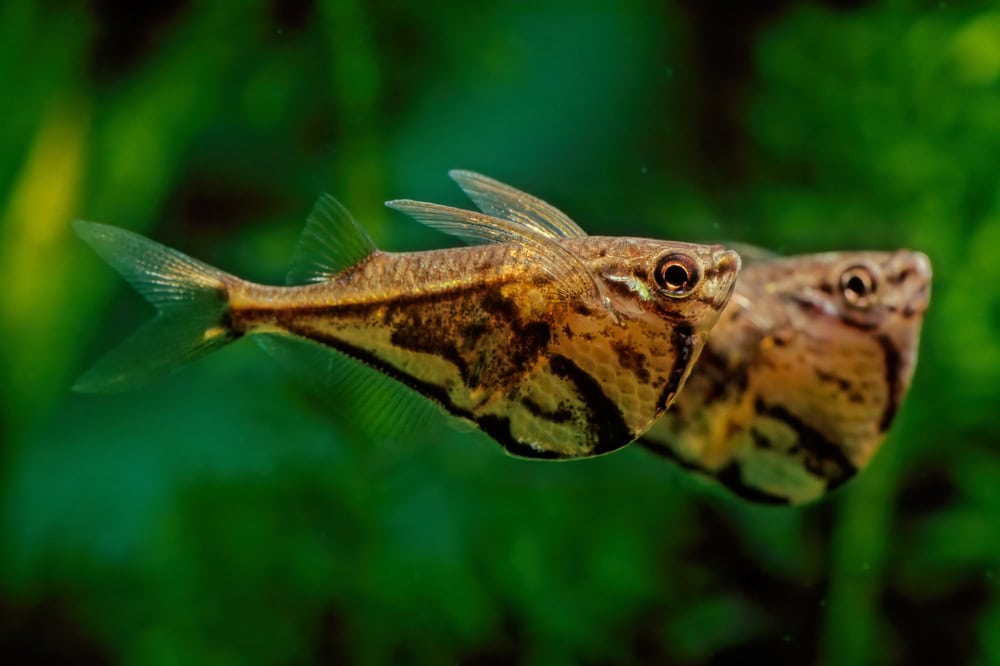
The Marbled Hatchet Fish is native to the Amazon Basin in South America. Its body resembles a hatchet, with a unique marble pattern of browns and silvers. These fish are surface dwellers and are known for their ability to jump out of the water to escape predators. They have a peaceful temperament and are best kept in schools. Marbled Hatchet Fish are unique due to their specialized body shape, jumping ability, and preference for the water’s surface.
Hardhead
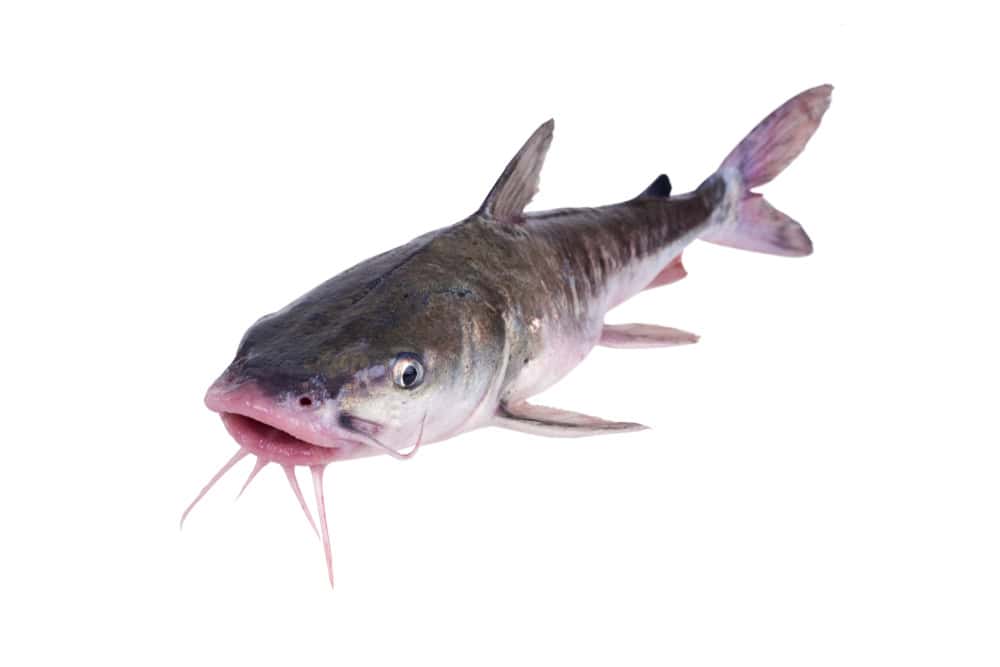
The Hardhead fish is found in the rivers and streams of North America. It has a sleek, silver body with a distinctive hard head, giving it its name. These fish prefer fast-flowing waters with rocky bottoms. Hardheads have a calm demeanor but are highly elusive, often hiding among rocks and debris. Their unusual head shape and preference for swift currents make them difficult to observe in the wild.
Freshwater African Butterflyfish
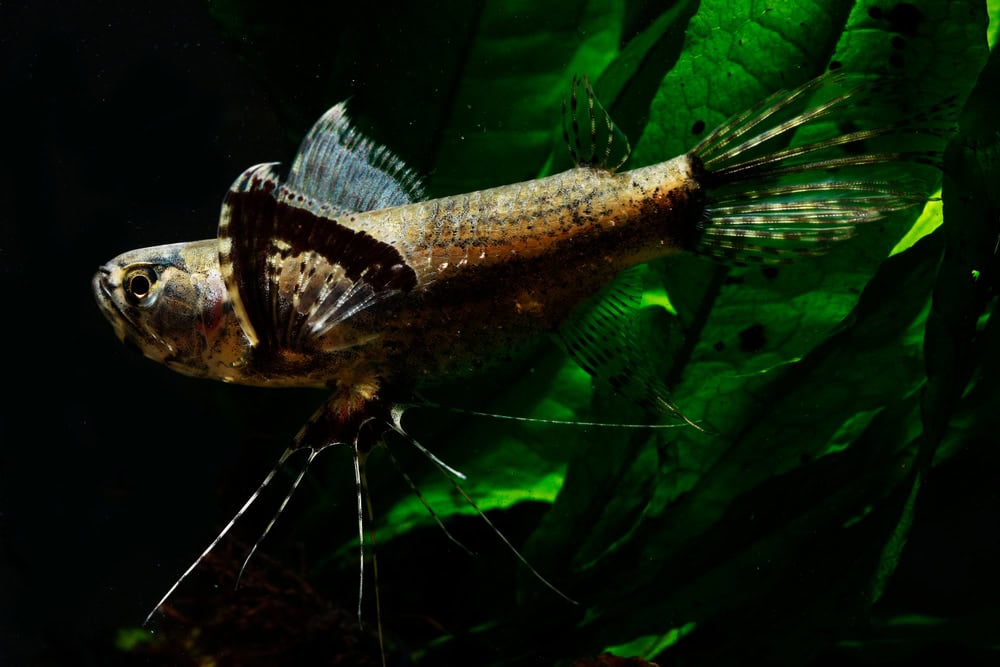
The Freshwater African Butterflyfish, native to the slow-moving waters of West Africa, is known for its wing-like pectoral fins. These fins allow it to glide above the water surface, hunting insects. Its appearance is marked by a flattened body and a mottled brown coloration. Butterflyfish have a predatory temperament and are highly territorial. They are unique for their flying ability and predatory nature, making them a fascinating species to observe.
Dwarf Puffer Fish
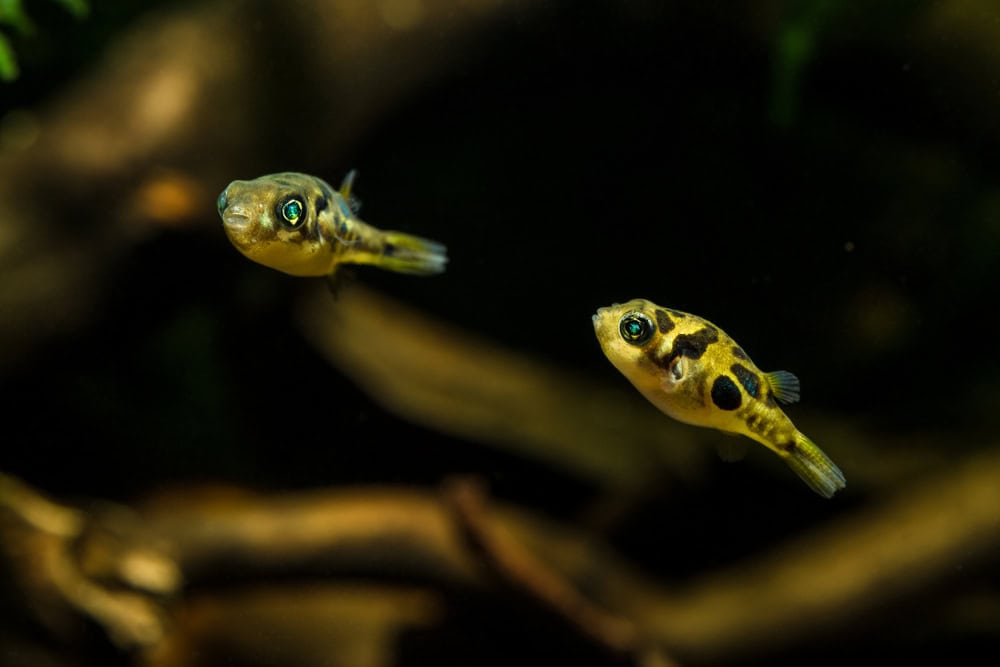
Dwarf Puffer Fish, also known as pea puffers, are native to the rivers and lakes of India. These tiny fish, measuring just over an inch, have a rounded body with bright yellow and green hues. They have a curious and playful temperament, often interacting with their surroundings. Due to their small size, amazing hues, and active behavior, dwarf puffers are great additions to small aquariums.
Female Kribensis
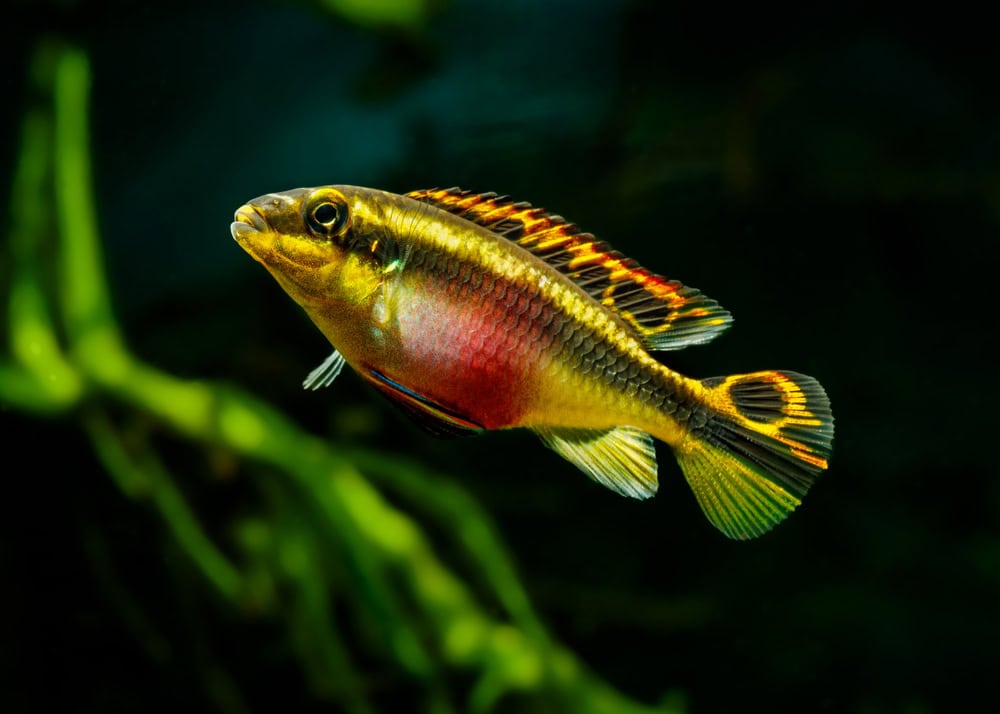
The Female Kribensis, originating from the rivers of Nigeria and Cameroon, is known for its vibrant colors and distinct markings. Unlike their male counterparts, females display a bright red belly during breeding. They are calm but extremely protective of their young. Female Kribensis are unique for their breeding colors and parental care, making them a favorite among cichlid enthusiasts.
Black Ghost Knifefish
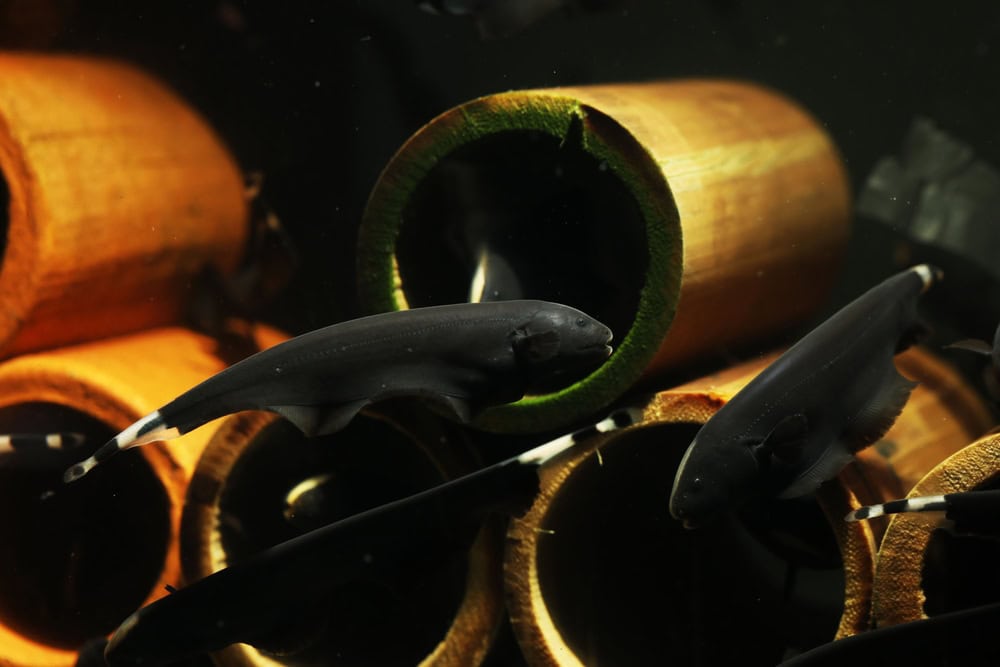
Black Ghost Knifefish, native to South America, lives in slow-moving rivers and tributaries with dense vegetation and mud. This nocturnal fish has a ribbon-like fin and a long, slender body in black. Despite its intimidating name, it’s relatively peaceful but territorial, preferring solitary living. Its unique capacity to generate weak electrical fields for navigation and communication sets it apart from other freshwater species.
Cherry Barbs
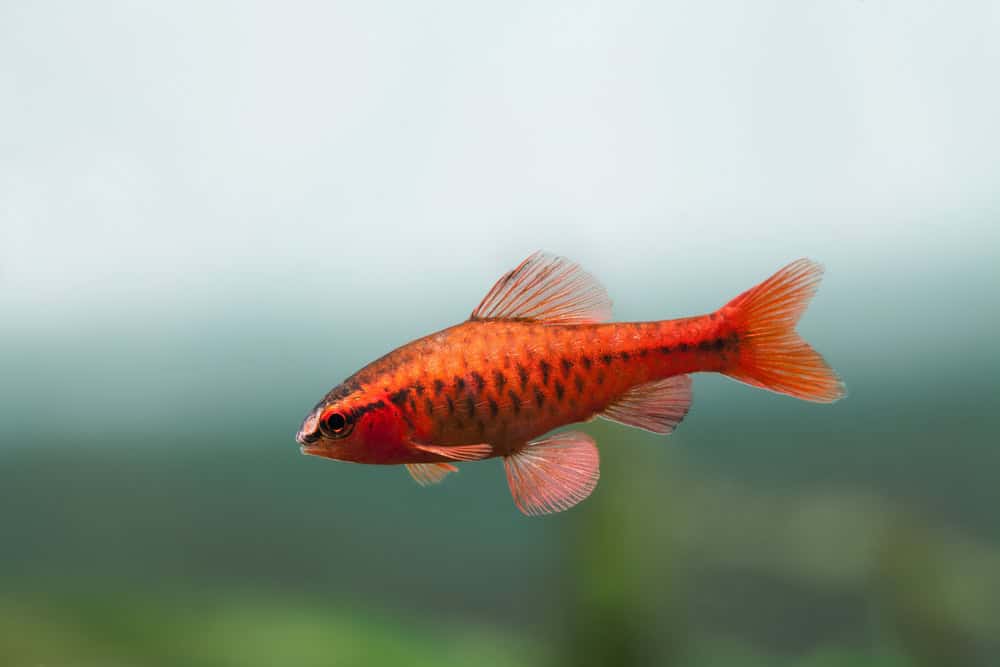
Cherry Barbs originate from slow-moving streams and ponds in Sri Lanka. These vibrant fish showcase striking red and pink hues, especially prominent during breeding periods. They are known for their active yet non-aggressive nature, making them suitable for community tanks. Their schooling behavior and vivid coloration make them provide life and social dynamics to any tank.
Elephant Nose Fish
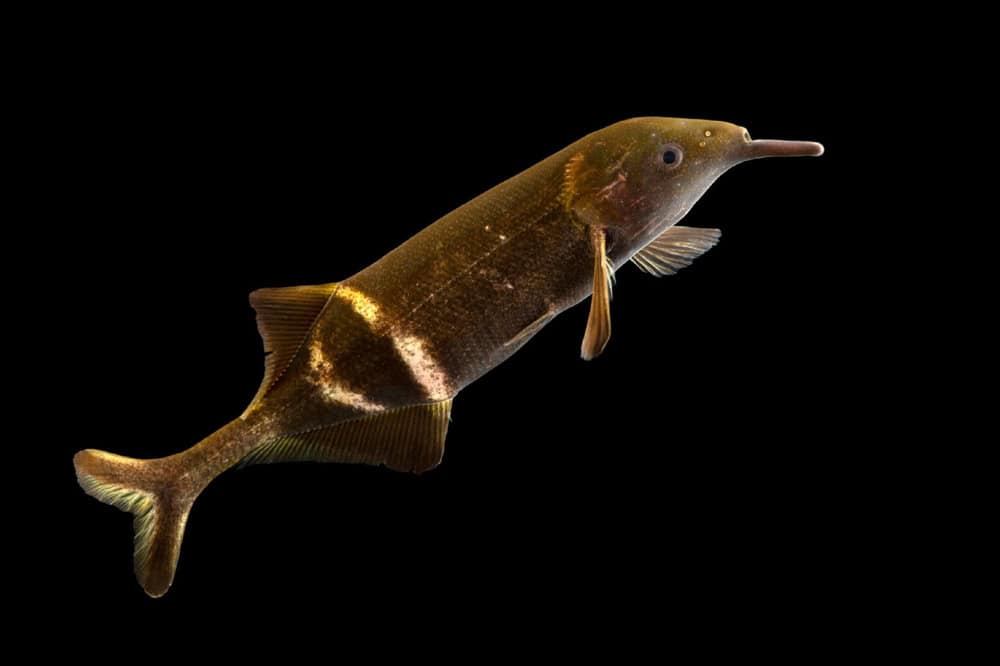
Elephant Nose Fish hail from the Congo River Basin in Africa, favoring densely vegetated waters. Their elongated snouts resemble an elephant’s trunk, aiding in their sensitive electrolocation abilities. These fish are peaceful but can be shy, often hiding in vegetation. They are fascinating additions to freshwater aquariums because they provide faint electrical signals to aid navigation and communication.
Chiselmouth
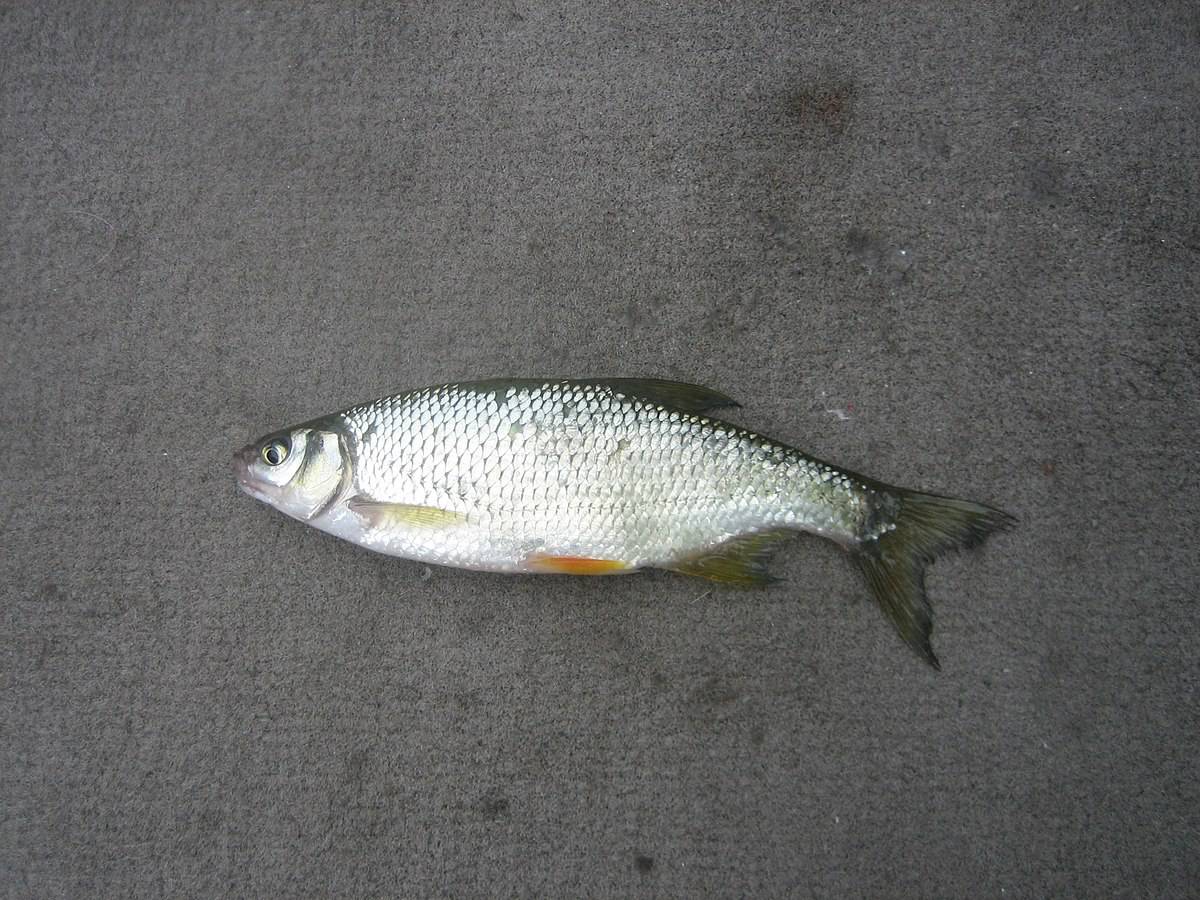
Chiselmouth, native to North America, inhabits cold, clear streams and lakes, primarily in the Pacific Northwest. Their sleek bodies and chisel-shaped lips allow them to eat aquatic invertebrates and tiny fish. They are known for their cautious yet curious temperament, often exploring their surroundings cautiously. Their cold-water preference and peculiar feeding habits make them popular with aquarists.
Bigmouth Buffalo
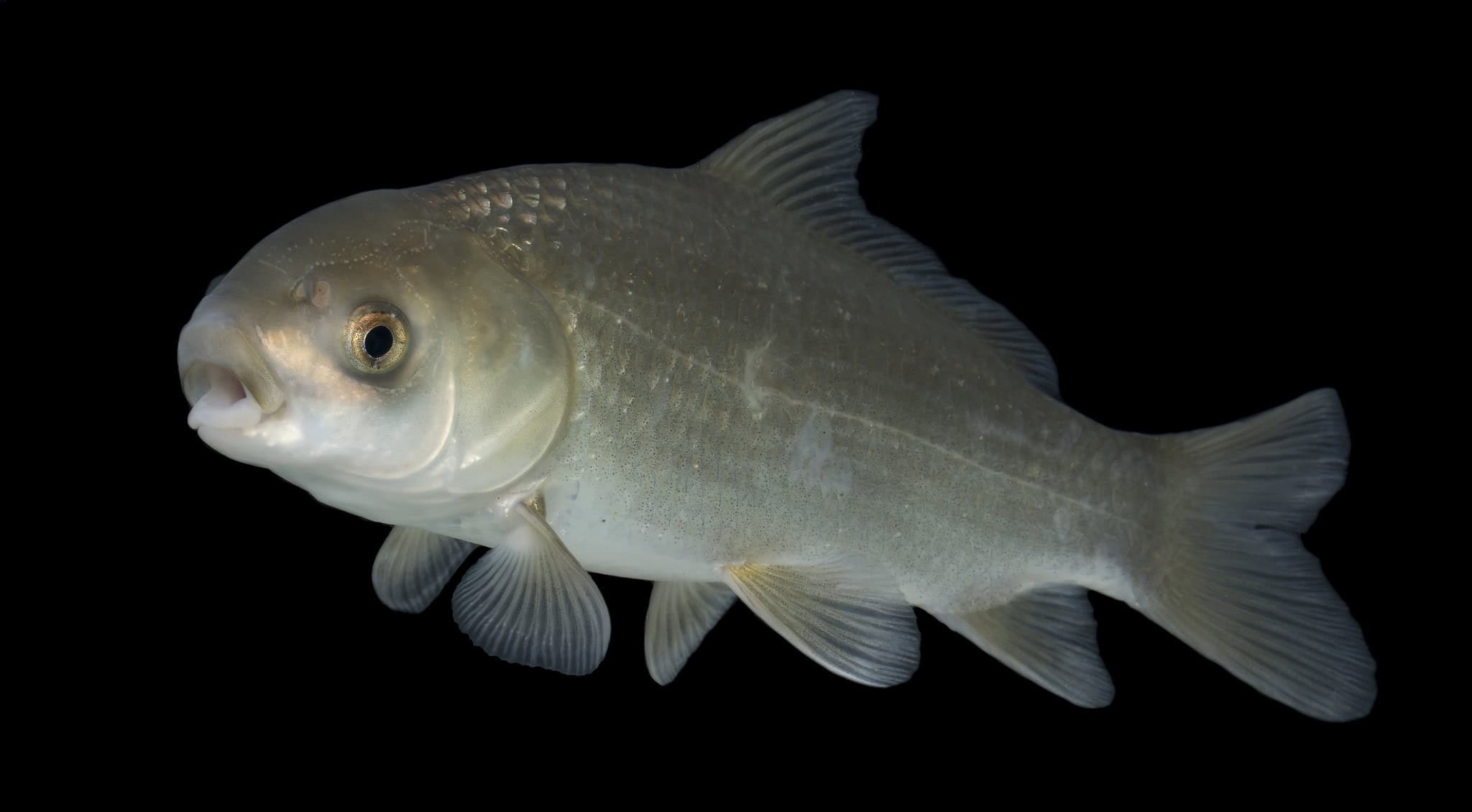
The Bigmouth Buffalo thrives in North America, particularly in the Great Lakes region and Mississippi River basin. Sporting a large, thick-lipped mouth, they’re silver-gray with a streamlined body, growing up to nearly 40 inches long. Typically peaceful, they are known for their massive size and elusive nature, often requiring patience and skill to catch. Their uniqueness lies in their ability to withstand changing water conditions and their resilience in adapting to various habitats.
This article originally appeared on Rarest.org.
More from Rarest.org
1976 Washington Quarter Value Guide

The 1976 Washington quarter is a copper-nickel-clad coin that is composed of 75% copper and 25% nickel. It has a core of pure copper and is covered by a mixture of copper and nickel. Read More.
10 Rarest Transformers Toys Ever

From manga to comic books to multiple television series and a live-action film franchise, Transformers have infiltrated almost every aspect of media and gained more than a few loyal fans. Read More.
The 20 Most Expensive Types of Agate You Can Buy

Each variety of agate on this list carries unique characteristics that can greatly influence its value. From stunning jewelry pieces to exquisite ornamental designs, these agates stand out as the epitome of natural artistry and luxury. Read More.
